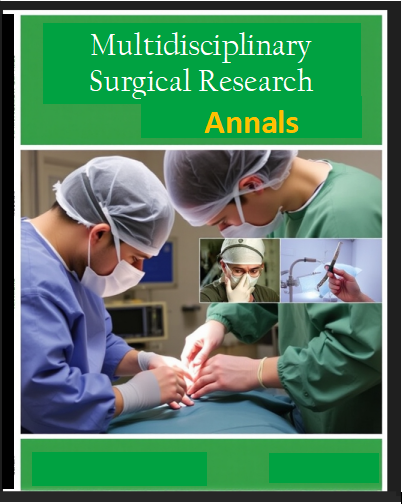OUTCOME OF FRACTURE NECK OF FEMUR TREATED WITH DYNAMIC HIP SCREW AND BONE GRAFT
Abstract
OBJECTIVE:To determine the outcome of fracture neck of femur treated with dynamic hip screw and bone graft in terms of bone union.
MATERIALS AND METHODS:Study design wasDescriptive case series in the department of Orthopedic surgery, KEMU/ Mayo hospital, Lahore.Duration of study was Six months.Sample size was 150 patients was calculated by 95% confidence level, 5% margin of error and taking percentage of union as 73.6%. [9]Sampling technique was non-probability consecutive sampling.Inclusion criteria included patients having age between 50 to 80 years of either sex with Garden type III and IV NOF fractureswere included in the study. All the data was entered and analyzed using SPSS version 20.0. Quantitative variables like age, and BMI were calculated as mean +S.D. Qualitative variables like gender, Garden classification scale (Type III/ IV) and fracture union were calculated as frequencies and percentages. Data was stratified for age, BMI, gender, affected side and Garden classification scale (Type III/ IV). Post stratification chi-square test was applied taking p value <0.05 as significant.
RESULTS:This study highlights that Dynamic Hip Screw (DHS) fixation augmented with autologous iliac crest bone grafting is associated with favorable clinical and radiological outcomes in elderly patients presenting with unstable Garden type III and IV femoral neck fractures. Achieving an overall union rate of 85.3%, the approach demonstrates efficacy in facilitating bone healing, particularly when accounting for patient-specific variables such as age, body mass index (BMI), and fracture classification. These findings advocate for the use of bone grafting as an adjunct to DHS fixation in managing high-risk femoral neck fractures, particularly in settings with limited access to arthroplasty. Further prospective, controlled studies are warranted to compare the efficacy of this combined approach with alternative fixation strategies and biological enhancement modalities.
CONCLUSION:Dynamic Hip Screw (DHS) fixation supplemented with autologous bone grafting represents a safe, economically viable, and clinically effective strategy for the management of unstable femoral neck fractures in elderly populations. Given its favorable outcomes, this technique should be regarded as a valuable component of orthopedic practice, particularly in low-resource settings where access to arthroplasty may be limited. To substantiate its long-term efficacy, functional benefits, and potential role within the broader framework of geriatric fracture care, future randomized controlled trials are warranted comparing this approach to alternative fixation techniques and arthroplasty.
KEYWORDS:fracture, neck of femur, dynamic hip screw, bone graft




